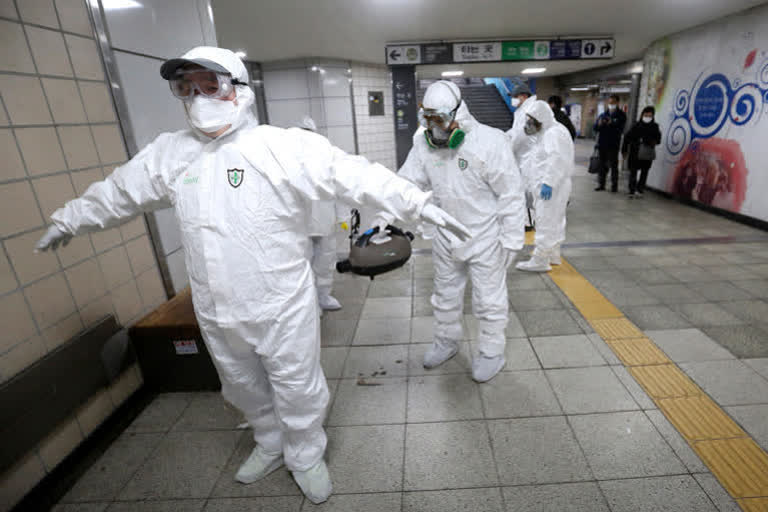Hyderabad: Novel coronavirus disease was first identified in Wuhan, China, in 2019, a new strain linked to the family of Severe Acute Respiratory Syndrome (SARS). It is named as COVID-19, where ‘CO’ stands for corona, ‘VI’ for virus, and ‘D’ for the disease. Symptoms include fever, cough, and shortness of breath.
In more severe cases, the infection can cause pneumonia or breathing difficulties. More rarely, the disease can be fatal. Most people infected with the COVID-19 virus will experience mild to moderate respiratory illness and recover without requiring special treatment. Older people and those with underlying medical problems like cardiovascular disease, diabetes, chronic respiratory disease, and cancer are more likely to develop severe illness. Therefore, preventing the spread from protecting these vulnerable communities is the most critical priority.
The COVID-19 virus spreads primarily through droplets of saliva or discharge from the nose when an infected person coughs or sneezes, so it's essential to practice respiratory etiquette (for example, by coughing into a flexed elbow). Touching surfaces contaminated with the virus and then touch their mouth, nose, and eyes can also transmit the virus.
The COVID-19 virus may survive on the surface for several hours, but simple disinfectants can kill it. The virus that causes COVID-19 can hide very effectively spreads quickly and sustains in the community in most geographic areas.
The virus is known to be present gastrointestinal system and is also excreted in faeces. However, further research is needed to establish the faecal-oral route transmission as another potential route of transmission. The CDC currently recommends that mothers with a confirmed case of the virus, as well as those who may have it, should be temporarily separated from their newborns.
This separation helps decrease the risk of transmission. Also, a person may be able to pass on the virus even before they start to show symptoms of the disease itself. The symptoms may take anywhere from 2 to 14 days to show up after exposure to the virus. Transmission can be prevented by proper and regular handwashing with soap and water, maintaining a social distance of a minimum of 1 meter (3 feet) between oneself and the infected person.
Practising respiratory hygiene that is to cover mouth and nose with one's bent elbow or tissue while coughing or sneezing and then dispose of the used tissue immediately. Avoiding touching of nose, mouth, and eyes is important as hands can transfer the virus to one’s body.
LESSON FOR INDIA:
Although Italy is considered a wealthy country with a good health care system, a large number of deaths and infections have occurred. The number of cases and deaths reported was different in the various Italian provinces. The province which conducted more testing had ensured that the number of infected cases did not overwhelm their hospitals.
People had been encouraged to stay at home. This prevented hospitals from becoming hotspots and could deal with critical cases only. The success of South Korea so far is not because of the Government itself; the public itself was a crucial part of the story. The country tested 20000 people for COVID-19 per day and released results within 6 hours. South Korea reported more recoveries than new infections.
This credit was given to the Government, and the citizens 'voluntary cooperation allowed the government to take extreme measures. The Government has been testing, tracking, tracing, and treating. The government adopted early measures to distance itself from society.
Public cooperation on a large scale has led the Government to take effective action. The Indian Government has taken a good step by locking down the entire country, but implementation has been shambolic. Migrants in cities have been walking for many kilometres to reach their villages and stay with their families. With the rural migrants heading home, the virus may spread to rural areas.
Hence, India should take prompt steps in providing shelter, food, and monetary benefits with necessary screening facilities at the site to these people. Currently, India is in stage 2 of the pandemic, which suggests the infection is locally transmitted either from close contact with the infected person. Health Ministry has informed that there is no community transmission as of now. Hence, instead of panicking, we need to create awareness about this respiratory illness.
The only way to prevent it is through physical distancing. People should not gather in any place. Health workers should have personal protection equipment (PPE) to prevent them from getting infected and from transmitting to others. The recent recommendation from the Government of India is to use a mask, even homemade at all times through this outbreak.
People at home quarantine need to adhere to the government guidelines. Strict adherence to the mitigation efforts is required to prevent transmission at this crucial point of time.
One lesson that India needs to learn is to invest more in public health facilities to face any epidemic. The heavy shortage of personal protective equipment might impede the short run. However, the Government has assured that the supply shortage will be met in due course. Better preparedness to deal with this pandemic starts with empowering ourselves with knowledge. To promote and sustain healthy behaviour, India should spend on public health services more than the current 2% of GDP, which is mostly spent on curative services.
The author, Dr.Giridhara R Babu is a Professor and Head, Life Course Epidemiology at IIPH Bangalore, Public Health Foundation of India.



